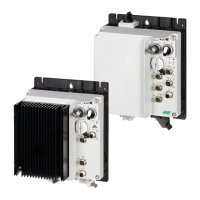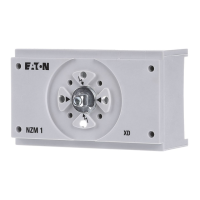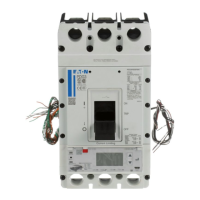2 Engineering
2.5 Safety and protection
46 Rapid Link 5 · RAMO5 · RASP5 05/20 MN034004EN www.eaton.com
2.5.2 Residual current devices
Other names include: RCD Residual current protective device, residual
current protective device (residual current protective circuit breaker).
Residual current circuit breakers protect persons and animals from the
presence (not the generation) of impermissibly high touch voltages.
They prevent dangerous, sometimes fatal injuries in the event of power
accidents and also serve to prevent fire.
RASP5 works internally with rectified AC currents. If an error occurs, the DC
currents can block an RCD circuit breaker of type A from triggering and there-
fore disable the protective functionality.
Safety-relevant leakage currents can occur during operation if a RASP5 unit is
not earthed (due to a fault).
Leakage currents to ground are mainly caused by external capacities in
RASP5; between the motor phases and the shielding of the motor cable.
The size of the leakage currents is mainly dependent upon the:
• length of the motor cable,
• shielding of the motor cable,
• height of the pulse frequency (switching frequency of the inverter),
• type of RFI filter,
• grounding measures at the site of the motor.
ATTENTION
Residual current devices (RCD) must only be installed on the
power side between the AC power supply network and the
RAMO5 and RASP5 Rapid Link 5 modules.
WARNING
Only AC/DC-sensitive residual current devices
(RCD,
type B)
must be used for RASP5
(EN 50178, IEC 755).
Markings on the residual current device
AC/DC sensitive (RCD, part
no. B)
→
The leakage current to ground is greater than 3.5 mA for
RASP5. Reinforced grounding (PE) must therefore be connected
in accordance with the requirements of EN 50178.
The cable cross-section must be at least 10 mm
2
or consist of
two separately connected ground cables.

